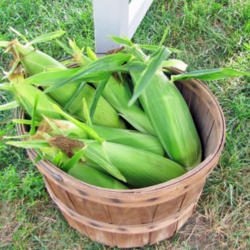
Harvesting corn is a matter of picking the ears at peak flavor. Here's how to know when to harvest.
The Sweetness FactorThe prime harvest time for sweet corn passes quickly for most varieties except the supersweets, so gardeners need to know how to judge when to harvest to get the most from their crop.
Corn is ready to be picked as soon as the ears have completely filled out. This goes for sweet corn and roasting ears.You can tell when this happens by feeling the end of an ear. If it's rounded or blunt rather than pointed, the ears are ready. The silks also dry up when the ears are almost ready to be picked.
If you don't trust your judgment, you can pull back a bit of the husk and check to see if the ear looks well filled and the kernels are creamy yellow or white. Many gardening guides tell you to pierce a kernel with your thumb nail to test for ripeness. If the liquid inside is watery, that ear isn't quite ready. If the liquid is white or "milky," you're in business.
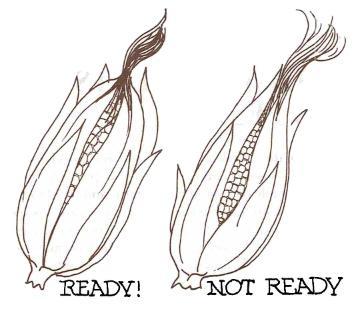
Although opening the husk is a fairly sure test, try not to do this. Once you open an immature ear, it's susceptible to insect and bird attacks as it continues to ripen. It usually takes only a little practice to become a good judge by feeling the ends of the ears.
Sweetness is the key, so it helps to understand what makes corn sweet and why timing is so important in your harvest. The plant manufactures natural sugars when the kernels are filling out. These kernels are seeds that each contain a natural food-storage compartment as well as the corn embryo. A seed can't store sugars, but it can live on stored starches throughout the winter months and in its early stages of growth the following season. As soon as the kernels are full of sugar, the plant begins to convert it into starch. For best flavor, harvest the corn before this change can take place.
The sweetness of corn depends on the variety, temperature and amount of sunlight during the day when the ears are forming. The plant makes the most sugar on cool, sunny days. If the temperature is too hot, the sugar-making process is slowed. That's why the long, crisp, sunny days of early fall produce the sweetest corn.
Time It RightIf you have a choice, it's a good idea to harvest corn as close to the time you're going to eat or use it as possible. In fact, you might want to have the water boiling for corn on the cob before you head out to harvest. To harvest sweet corn, grab an ear and twist it down and off the stalk.
If you want the sweetest corn possible, try to harvest each ear at its peak. Keep in mind that the natural conversion of sugar into starch is sped up when you harvest. The moment you pick an ear of sweet corn, its sugars start to change into starches because the natural goal is to nourish seed for reproduction. In 24 hours, most varieties convert more than half their sugar content to starch. However, the new super sweet varieties stay sweet much longer after harvest than the old standards.
The loss of sugar is much slower at lower temperatures, so refrigerate corn if you're not going to be able to eat it right away. If you're not near a refrigerator and you have some harvested corn, keep the freshly picked ears in single layers, rather than stacking them. Corn tends to overheat inside its tight husks, so give each ear as much breathing room as possible. It also helps to cover the ears with a damp cloth.
Super sweet varieties have been developed to slow down the conversion of the natural sugars into starch, which makes these varieties last longer on the stalk, and helps them retain their flavor for a few days once harvested. Many seed catalogs claim that super sweet types are twice as sweet at harvest time as ordinary hybrids, and four times as sweet after 48 hours.
Some people prefer corn that's less sweet, with more texture in each kernel. They take advantage of the natural conversion process and don't harvest corn until it's somewhat doughy from the increased starch content. They may also wait a day or two to serve it after picking.
If you want to store corn over the winter or grind your own cornmeal, give it time to harden completely. This means it has passed through its entire carbohydrate production cycle. It will then contain such heavy starch that it will be too hard to bite and it will keep for many months in storage.
Popcorn Pointers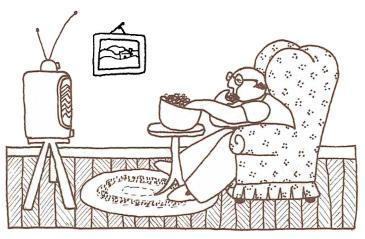
The only way that growing popcorn differs from growing sweet corn is at harvest time, and popcorn is actually easier to harvest because you don't have to catch it at the peak of sweetness. Leave popcorn in the garden until the stalks and husks are brown and dry, then twist and snap each ear from the stalk. Do this before the frost hits. To prepare popcorn for indoor curing, carefully strip away the dried husk from each ear. The kernels will be partially dried or "cured," a necessity for long-term storage.
Besides drying on the stalks, popcorn requires another four to six weeks of thorough drying in a warm, well-ventilated place. Corn can't pop unless there's the right amount of moisture inside the kernel. When it's heated, the moisture turns to steam, which causes the kernel to burst.
Place the ears in mesh bags or spread them out in an area where they'll have warm air circulating around them. You can also hang mesh bags full of popcorn ears in your garage for about four weeks. After curing, hang the bags of corn from the rafters of your root cellar. The corn can keep for years in the cool, dry, dark conditions there.
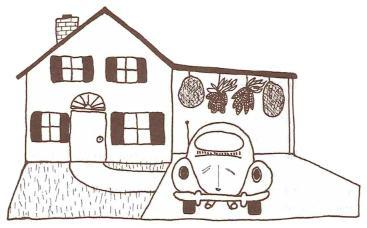
After a month of curing, the kernels can be taken off the ears and stored in airtight jars. Whether you're removing the kernels before storage or just before popping, there's no real trick to it. Simply grasp the ear firmly in both hands and twist until the kernels drop out. Once started, the kernels drop off with very little pressure. However, beware of the sharply pointed kernels if you're using your bare hands. After two or three ears, you may have a few nicks and scratches. If you want to remove the kernels from a lot of ears, it might be a good idea to wear gloves.
Popcorn doesn't take much garden space for a sizable harvest. Each ear is loaded with tiny kernels come harvest time, and three or four five-foot-long rows should be plenty. Many popcorn varieties produce one or two ears per plant, so you may have enough by growing just five or six plants.
Pop homegrown popcorn just as you would store-bought. Heat a few tablespoons of oil in a deep pot. Sprinkle in enough kernels to coat the bottom and cover the pot. If not, as soon as you hear the first kernel pop, shake the covered pot vigorously while the rest pop. Shaking prevents the kernels from burning, and the unpopped kernels stay on the bottom nearest the heat. If you're using a popcorn popper, follow the manufacturer's instructions.
When the popping stops, remove the pot from the heat and take off the lid to let the steam escape. The popcorn is ready. Enjoy it plain, or add your favorite topping.
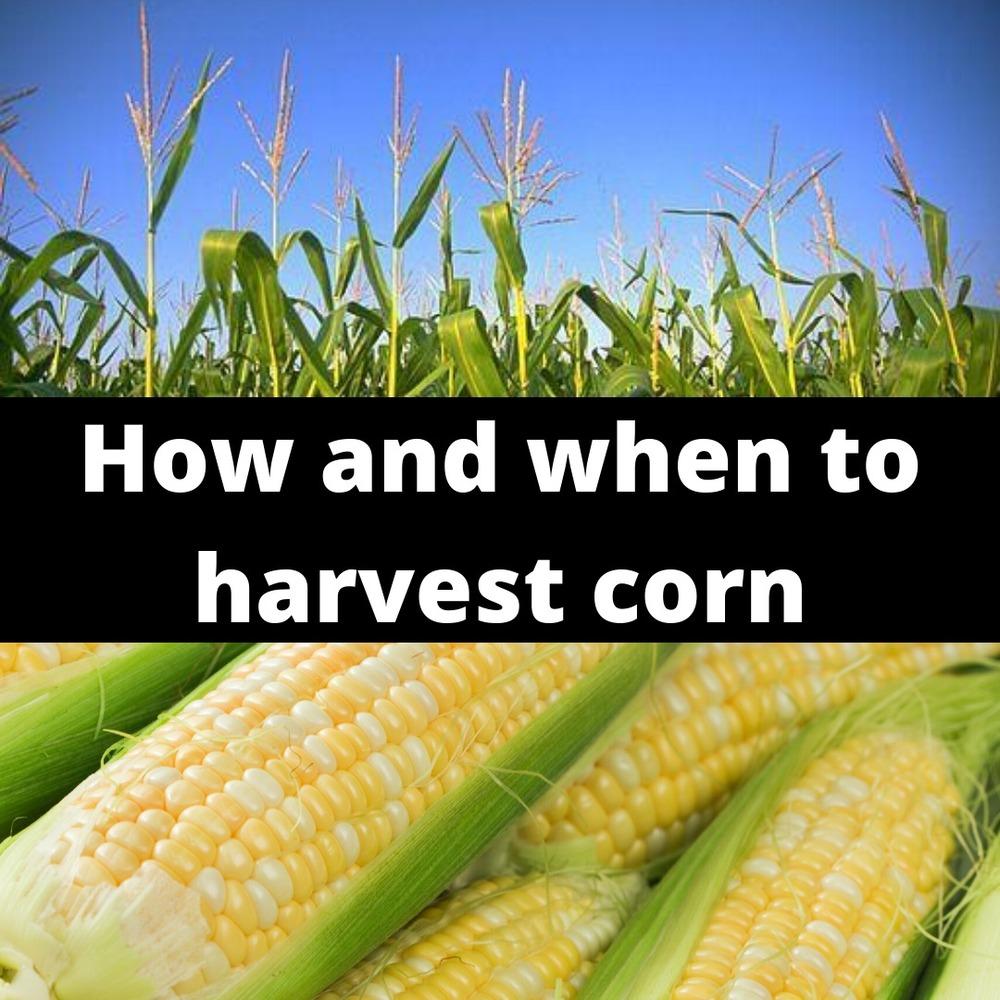
 Victory Seed Company has all the seeds you want for your best garden in 2024.
Victory Seed Company has all the seeds you want for your best garden in 2024.
For 25 years, the family-owned Victory Seed Company has provided the highest quality vegetable, herb and flower seeds to families across the country. We are passionate about providing you the best seeds available that give excellent germination, robust plants, and the harvest you want. With a catalog of over a thousand varieties, we have everything, and our prices are the kinds that we'd want to pay. We have hundreds of yesterday's heirloom vegetables, as well as today's award winning hybrid selections. Get to know us by visiting our website and browsing through our online vegetable seed catalog.
| 1. Harvesting Corn ← you're on this article right now |
| 2. Cooking and Storing Corn |
| 1. Harvesting Corn ← you're on this article right now |
| 2. Cooking and Storing Corn |